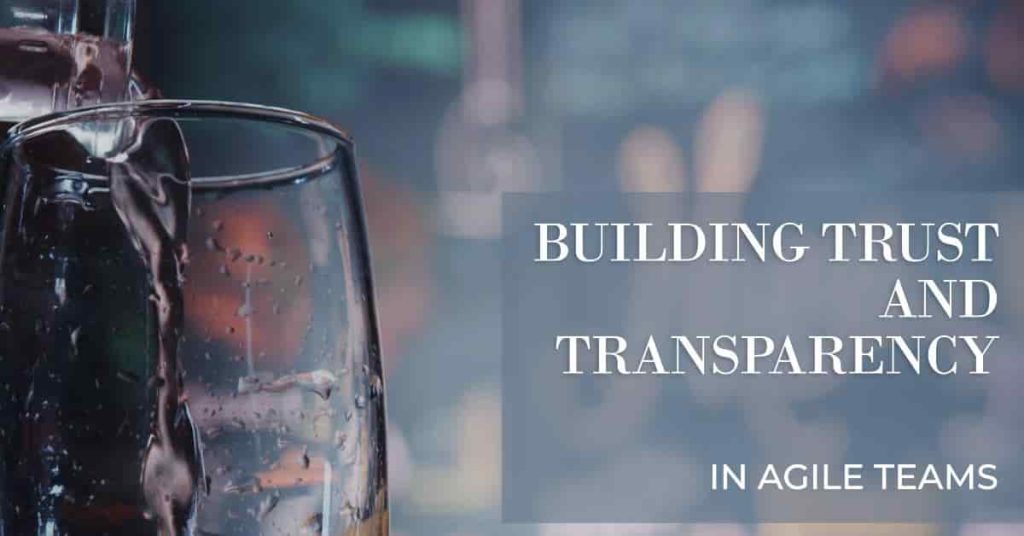
Valdymas - Building Trust and Transparency in Agile Teams
In the busy business world, building trust and being open with team members are crucial for success. Agile management emphasizes flexibility, teamwork, and ongoing improvement, thriving when trust and transparency are at the core. At Valdymas, a company focused on innovation and leadership, these values are essential, especially when developing new solutions like fintech apps and educational programs. Let’s explore how Valdymas builds and maintains trust and transparency in its Agile teams.
The Importance of Trust in Agile Teams
Trust is essential in any team, but it plays an especially important role in Agile management. Agile teams operate on the principles of collaboration and self-organization. Without trust, these principles fall apart. Trust allows team members to take ownership of their tasks, make decisions, and provide honest feedback—all key elements of an Agile team’s success.
At Valdymas, trust is not just about believing in someone’s ability to do their job; it’s about creating an environment where people feel safe to express their ideas, challenge assumptions, and learn from failures. Trust also fosters a sense of belonging and commitment. When team members trust each other, they are more likely to work together toward common goals and support each other when challenges arise.
Building Trust Through Communication
Open and effective communication is the bedrock of trust in Agile teams. In Valdymas, communication goes beyond just updating team members on project status. It’s about creating a dialogue where everyone feels heard and valued. Agile ceremonies such as daily stand-ups, sprint planning, and retrospectives provide structured opportunities for team members to communicate openly.
Regular check-ins and feedback sessions ensure that everyone stays aligned with the project goals. Additionally, clear communication of expectations helps avoid misunderstandings that could otherwise erode trust. Valdymas encourages team members to ask questions, share concerns, and discuss potential roadblocks. This level of transparency not only builds trust but also ensures that issues are addressed early before they become bigger problems.
Transparency in Agile Teams
Transparency is a key principle of Agile management. It means that all aspects of the project are visible to the entire team. This includes progress, challenges, decision-making processes, and the rationale behind changes. Transparency ensures that no one is left in the dark, and it prevents misunderstandings or assumptions from derailing the project.
At Valdymas, transparency is achieved through a variety of tools and practices. Tools like project management software allow team members to see real-time updates on task statuses, timelines, and deliverables. Sprint reviews and demonstrations provide opportunities for the team to showcase their work and receive feedback from stakeholders, fostering a sense of accountability.
Transparency extends beyond just project management tools. It’s also about creating a culture where information is shared openly, and there are no hidden agendas. In an Agile team, everyone should feel comfortable sharing their progress, challenges, and ideas without fear of judgment. This openness encourages collaboration and innovation, both of which are essential to Agile success.
The Role of Leadership in Building Trust and Transparency
Leaders in Valdymas play a crucial role in fostering trust and transparency. Agile leaders, often called Servant Leaders, focus on supporting their teams rather than micromanaging them. They trust their team members to make decisions and take ownership of their tasks. By empowering the team, leaders demonstrate their trust in the team’s abilities, which, in turn, builds trust within the team.
Moreover, leaders must be transparent in their decision-making processes. This means clearly communicating why certain decisions are made and how they align with the overall goals of the project or organization. When leaders are transparent, it reduces uncertainty and builds confidence among team members. In Valdymas, leadership practices such as open-door policies and regular team updates help build a culture of trust and transparency.
Encouraging Accountability in Agile Teams
Accountability is another pillar of trust and transparency. In an Agile team, every member is responsible for their tasks and deliverables. However, accountability does not mean assigning blame when things go wrong. Instead, it’s about creating an environment where team members feel responsible for their contributions and are encouraged to improve continuously.
In Valdymas, Agile teams operate on a shared sense of accountability. Team members know that their success is tied to the success of the entire project, so they are motivated to support each other and work together to overcome challenges. This shared responsibility builds trust because team members know they can rely on one another to do their part.
Continuous Feedback and Improvement
Agile is all about continuous improvement, and feedback is a critical part of that process. For feedback to be effective, it must be both given and received in a constructive and transparent manner. In Valdymas, feedback is not seen as criticism but as an opportunity to learn and grow. Regular retrospectives allow the team to reflect on what went well, what didn’t, and how they can improve in the next sprint.
By creating a feedback loop, Valdymas ensures that trust and transparency are continuously reinforced. Team members trust that feedback will be given fairly and constructively, and they feel safe sharing their own observations and ideas for improvement. This culture of continuous improvement not only strengthens the team but also drives innovation and success in Agile projects.
Overcoming Challenges in Building Trust and Transparency
Building trust and maintaining transparency in Agile teams is not without its challenges. For instance, in remote or distributed teams, communication barriers can make it harder to build relationships and trust. In such cases, Valdymas relies on video conferencing tools, instant messaging platforms, and regular virtual check-ins to maintain a sense of connection and transparency.
Another challenge is the fear of failure. In a culture that is not used to Agile, team members may be reluctant to be transparent about challenges or mistakes, fearing that they will be blamed. To address this, Valdymas promotes a “fail fast, learn fast” mindset. In Agile, failure is seen as an opportunity to learn and improve, not something to be punished. By fostering a culture where mistakes are seen as part of the learning process, Valdymas builds trust and encourages transparency.
The Impact of Trust and Transparency on Performance
Trust and transparency have a direct impact on the performance of Agile teams. When team members trust each other and have full visibility into the project’s progress, they are more likely to collaborate effectively and stay aligned with the project goals. This leads to higher productivity, faster delivery times, and better-quality outcomes.
In Valdymas, Agile teams that prioritize trust and transparency have consistently delivered successful projects, whether it’s developing fintech apps, educational platforms, or other innovative solutions. The combination of trust, transparency, and Agile practices creates a high-performing team that can adapt quickly to changing requirements and deliver value to clients and stakeholders.
Conclusion
Building trust and transparency in Agile teams is essential for success, especially in innovative environments like Valdymas. Trust allows team members to collaborate openly, take ownership of their work, and provide honest feedback. Transparency ensures that everyone stays informed and aligned with the project’s goals. Together, these principles create a strong foundation for Agile teams to thrive.
In Valdymas, these values are not just theoretical—they are ingrained in the company’s Agile practices. By fostering a culture of trust and transparency, Valdymas ensures that its teams can deliver high-quality, innovative solutions in a fast-paced and constantly evolving world.
Reference
📌 Schwaber, K., & Sutherland, J. (2020). The Scrum Guide. Scrum.org.
📌 Beck, K., et al. (2001). Manifesto for Agile Software Development. Agile Alliance.
📌 Brown, B. (2018). Dare to Lead: Brave Work. Tough Conversations. Whole Hearts. Random House.
📌 Lencioni, P. (2002). The Five Dysfunctions of a Team: A Leadership Fable. Jossey-Bass.



